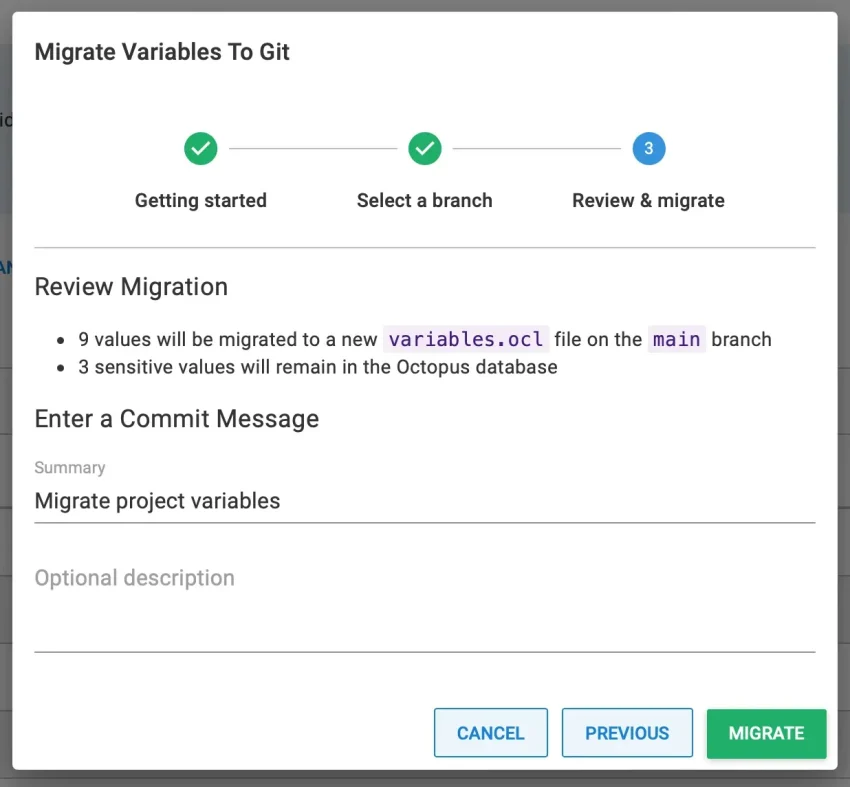Office Migration to Git: Enhancing Developer Productivity
Office Migration to Git marks a revolutionary turning point for developer productivity at Microsoft.
For years, the team grappled with the limitations of Source Depot, a legacy system that stifled innovation and hindered efficient version control. The switch to Git not only modernized the development process but also provided a more seamless experience for engineers who were desperate for better tools and practices. As organizations increasingly embrace version control systems, the challenges of Git migration can serve as daunting reminders of the potential obstacles in transitioning projects of massive scale. By overcoming these Git migration challenges, the initiative paved the way for a more robust developer experience that ultimately revitalized Office’s development landscape.
The transition of Office’s codebase from an antiquated system to Git is not just an upgrade in toolsets; it represents a fundamental shift in how teams collaborate and manage their code. Often referred to as source control evolution, this migration embodies the transition from a centralized repository to a distributed model that fosters agility and teamwork. The journey reflects the ongoing quest for enhanced developer efficiency and satisfaction, highlighting the trials and innovations that arise in modern software development landscapes. As organizations seek to harness advanced version control techniques, the learning curve associated with migrating from legacy systems, such as Source Depot, showcases the intricate relationship between technology and the people it serves. Embracing these changes can significantly overhaul developer experience, making the path toward Git adoption a pivotal chapter in the continuous story of software engineering.
Office Migration to Git, Understanding Source Depot: Initial Challenges
Source Depot, a version control system developed by Microsoft, emerged during an era when robust version control solutions were limited. Its shortcomings began to surface as the complexity and scale of software projects grew. The system was slow, cumbersome, and often felt like a relic of another time. Employees had to grapple with frustrating waits for code retrieval and convoluted branching processes that made version management a tedious endeavor. The legacy of Source Depot highlighted critical inefficiencies in developer workflows, leading many to yearn for more modern, agile solutions.
In environments where time equates to significant financial investments, maintaining Source Depot became a daunting task. Developers frequently faced obstacles that hindered productivity, leading to dissatisfaction amongst teams. This ultimately catalyzed the necessity for an urgent migration to a more efficient version control system, setting the stage for the monumental transition to Git—a move that promised to enhance developer experience (DevEx) and streamline workflows.
Office Migration to Git, The Migration Journey: Transitioning to Git
The migration project from Source Depot to Git was not just a technical upgrade; it represented a significant shift in the fundamental operations of development teams. This ambitious initiative involved a multi-year roadmap, engaging thousands of engineers in the transition. Challenges included ensuring ongoing compatibility with existing tools and workflows while simultaneously facilitating training programs to ease the transition. Fears about potential disruptions were prevalent, showcasing a crucial aspect of migration: the importance of fostering a supportive environment for developers who had grown accustomed to Source Depot.
To effectively implement Git, engineers needed to grasp its functionalities, as many were rooted in their familiarity with Source Depot. This led to the development of comprehensive training resources and hands-on sessions where developers could practice Git commands in a controlled environment. This approach was pivotal in alleviating concerns and ensuring smoother adoption. The investment in understanding Git significantly improved developer productivity post-migration and shifted the perception of version control within the organization.
Office Migration to Git, The Importance of Developer Productivity in Migration
Throughout the migration process from Source Depot to Git, a key focus was on enhancing developer productivity. As the intention was to create a more efficient and satisfying experience for developers, it was vital to address their concerns and needs. This included streamlining processes and ensuring minimal interruptions during the transition. Effective communication became essential, leading to the establishment of regular updates and feedback channels that fostered a culture of transparency among teams.
By measuring developer satisfaction alongside technical metrics post-migration, it became clear that the transition to Git significantly contributed to improved developer productivity. Tasks that once took hours could be completed in minutes, leading to an overall acceleration in software development cycles. The increased efficiency was not only beneficial for organizational growth but also pivotal in professional development, enriching the skill sets of the developers and fostering a more collaborative workplace.
Office Migration to Git, Embracing Git: Overcoming Migration Challenges
As teams transitioned from Source Depot to Git, developers encountered several challenges inherent to such a drastic technological shift. One of the most significant hurdles was adjusting to Git’s decentralized structure, which differed vastly from the centralized model of Source Depot. This paradigm shift required thoughtful strategies to ensure that all teams could adapt without losing access to critical project timelines and repositories.
Realizing that developer experience is paramount to any successful migration, Microsoft invested heavily in feedback loops to understand the pain points of their teams. Addressing these challenges proactively involved not only technical training but also cultivating a supportive community among developers. The lessons learned during this migration helped define best practices and anticipated future endeavors in technological advancements throughout the organization.
The Human Side of Migration: Communication and Trust
Technical migrations, particularly one as expansive as the transition from Source Depot to Git, often falter not because of technology but due to the human element involved. In a landscape filled with thousands of engineers, effective communication became the linchpin for a successful transition. By adopting a hub-and-spoke model that established designated champions within each team, Microsoft ensured that every voice was heard, and concerns could be swiftly addressed.
This model facilitated greater trust among team members, as failures and setbacks were met with transparency rather than panic. Regular updates and honest assessments of migration status not only kept everyone in the loop but also empowered developers to contribute actively to the migration process. Ensuring that all developers felt informed and involved led to a strong culture of collaboration, which ultimately contributed to the success of the project.
Office Migration to Git, Training for Success: Making Git Intuitive
One of the critical focuses during the migration process was to ensure that developers felt competent and comfortable using Git day-to-day. Instead of bombarding seasoned Source Depot users with dense documentation, the approach leaned toward creating engaging training sessions that illustrated how Git workflows translate to their existing development practices. This strategic emphasis on practical application eased apprehension and streamlined the learning curve for many.
Training initiatives employed relatable scenarios that developers might face in their daily work, making Git seem less daunting. With hands-on experiences designed to foster confidence, many developers began to recognize the power of Git’s capabilities, such as branching and merging, which dramatically improved their collaborative coding practices. By making Git feel intuitive, the team reduced hesitance and increased overall adoption rates.
Rollback Strategies: Planning for Contingencies
In any sizeable migration project, the potential for setbacks necessitates a clear rollback strategy. The Office migration team understood that, despite meticulous planning, unforeseen hiccups might occur. Hence, they established a ‘red button’ mechanism that allowed the leadership to halt the migration process on demand, promptly addressing any severe negative impacts on productivity.
This contingency planning not only reassured the development teams but also created a safety net that encouraged innovation and risk-taking during the transition. Developers could experiment with new workflows and technologies in Git, free from the fear that their productivity would be permanently compromised. This proved fundamental to ensuring that the eventual migration to Git was not solely a technical accomplishment but also a psychological shift that empowered developers.
Long-term Results: Measuring Developer Experience Post-Migration
Post-migration assessments revealed a wealth of positive outcomes for developers that directly correlated with the switch to Git. Surveys indicated that a significant majority of engineers preferred Git for its efficiency and enhanced collaborative capabilities compared to Source Depot. This newfound satisfaction yielded not only an increase in productivity but also shorter onboarding times and a stronger alignment on the objectives among teams.
Moreover, the migration effort fostered an organizational culture that valued adaptability and growth. Developers discovered that the transferable skills gained through their experience with Git opened avenues for career advancement within and beyond Microsoft. Overall, the positive metrics revealed that migrating to Git wasn’t just about upgrading a tool; it was about revolutionizing the way developers approached their craft.
Lessons Learned from Large-Scale Migrations
The transition from Source Depot to Git provided invaluable insights that can be applied to future migrations across various organizations and industries. Primarily, the emphasis on robust communication strategies proved essential in navigating the complexities of technical workflows while addressing human factors that could derail progress. Investing in relationships and trust-building paved the way for smooth collaborations and successful outcomes.
Moreover, the importance of a parallel structure during migrations cannot be overstated. The experiences derived from this project highlighted how establishing a Git-native codebase alongside existing systems mitigated risks and ensured operational continuity. These foundational lessons serve as guiding principles for any organization facing similar transformative challenges, laying the groundwork for future technological advancements.
Frequently Asked Questions
What are the key challenges faced during Office Migration to Git?
The Office Migration to Git faced several key challenges including the need to accommodate various customer schedules across different Office versions, ensuring the migration preserved existing workflows and build systems, and maintaining compatibility between Source Depot and Git. Additionally, creating effective communication channels among over 4,000 engineers proved to be crucial in maintaining productivity and cohesion throughout the migration process.
How does the migration from Source Depot to Git improve developer productivity?
Migrating from Source Depot to Git significantly enhances developer productivity by streamlining version control processes. Developers benefit from Git’s rapid branching, merging capabilities, and its decentralized nature, allowing for more efficient collaboration and reduced wait times for code retrieval. The switch also empowers developers with modern version control tools, fostering a better developer experience and improving overall job satisfaction.
Why was Git chosen over Source Depot for Office migration?
Git was chosen over Source Depot for its superior performance in managing large codebases, ease of branching and merging, and its widespread acceptance in the developer community. The migration aimed to alleviate the limitations of Source Depot, which included slow retrieval times and cumbersome workflows. By adopting Git, Microsoft sought to enhance developer experience and streamline collaboration among teams.
What role did communication play in the success of the Office Migration to Git?
Communication was a vital factor in the success of the Office Migration to Git. With thousands of engineers involved, the establishment of a structured communication model using champions for each team ensured that information was disseminated effectively. Regular updates, transparency in challenges faced, and multiple communication mediums helped build trust and ensured that everyone was aligned throughout the migration process.
How did developers react to the transition from Source Depot to Git?
Developers had a largely positive reaction to the transition from Source Depot to Git. A survey conducted six months post-migration revealed that 89% preferred Git, citing improved developer experience and productivity. They appreciated gaining transferable skills, reduced onboarding times, and a more collaborative code review process, which collectively enhanced their overall work satisfaction.
What is the significance of the ‘parallel universe’ approach in Git migration?
The ‘parallel universe’ approach was significant in the Git migration process as it allowed for the continuous synchronization of a Git-native codebase with Source Depot. This method ensured that the live codebase was preserved during migration, minimizing disruptions for developers. By proving the equivalence of both systems before fully transitioning, Microsoft maintained operational integrity and confidence in the new version control system.
What lessons were learned from the Office Migration to Git?
Key lessons learned from the Office Migration to Git include the importance of investing in communication, establishing parallel systems to prove equivalence, identifying champions early on, planning for potential rollbacks, and measuring developer satisfaction alongside technical metrics. These insights underline that successful migrations hinge not just on technology, but on effectively managing change among large teams.
| Key Point | Details |
|---|---|
| Source Control History | Source Depot emerged as an internal solution for managing code when Git was not an option, but it presented many challenges. |
| Migration Need | The migration to Git was driven by productivity need as Source Depot became a financial burden and hindered developer efficiency. |
| Migration Phases | The migration occurred in phases: first, setting up a parallel system (Git-native codebase syncing with Source Depot), followed by proving equivalence between both systems. |
| Communication Strategy | A hub-and-spoke model was implemented; champions were assigned to each team to ensure efficient communication and manage feedback. |
| Training and Onboarding | Training environments were created to help developers transition from Source Depot to Git comfortably, with emphasis on skills acquisition. |
| Long-term Results | After the migration, developer satisfaction improved significantly, onboarding times were halved, and productivity scores increased. |
| Key Lessons | Effective communication, establishing parallel systems, and having rollback plans were crucial to the migration’s success. |
Summary
Office Migration to Git was a transformative journey that not only enhanced version control but also bolstered developer productivity. By moving from Source Depot to Git, Microsoft addressed a multitude of telecommunications and operational challenges, ultimately fostering a culture of efficiency and skill development among its engineers. Through meticulous planning, effective communication, and embracing feedback, the migration paved the way for improved collaboration, reduced onboarding times, and greater overall satisfaction. Innovation in workflows and tools like the Virtual File System for Git exemplified how strategic adaptations could manage large-scale codebases effectively. The migration to Git stands as a significant milestone, highlighting the importance of adaptability in tech environments.
#GitMigration #DeveloperProductivity #VersionControl #SoftwareDevelopment #TechWorkflow








